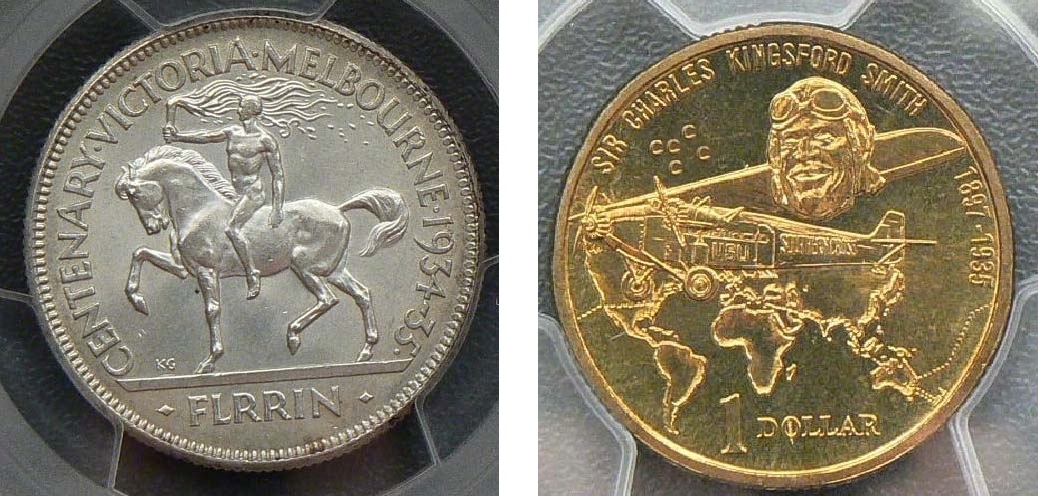By using this website, you are giving us consent to collect information and use cookies to improve your customer experience. For more information about data privacy, please visit our data privacy page.
In an ideal world, we’d trade coins face-to-face over coffee. I’d bring along my coins, which you—the collector—would diligently assess, one-by-one. With a loupe and a bright light, you could examine a coin until you were completely satisfied with it. If there were a mark or spot on the surface, you’d be able to take a close look with your loupe. If you wanted to scrutinise the coin’s strike, you could bring the coin close to your eye and do so. Sadly, doing business face-to-face is not always practical. That’s why I’ve invested a lot of time and effort into getting my coin photography right. It hasn’t been easy, and it’s still not perfect, but after a lot of trial-and-error, I think I’ve learned to take photos that are fair and representative.
However, no matter how good my photography, when you take a 21 millimetre coin (the size of a fingernail) and blow up its photo on a twenty-one inch computer screen (the size of a car’s hubcap), that previously Gem-looking gold sovereign suddenly looks like a pockmarked piece of ex-jewellery. Let’s face it: a coin graded anything but MS70 is not perfect. It might have bag marks, some edge knocks, a poor strike, toning, field indentations, hairlines, or some other imperfections. As a consequence, it’s important when viewing coin photos not to get too distracted by what might be a tiny flaw that is not noticeable on a coin in the flesh.
(As an aside, a collector looked at one of my coins on my website and said to me that he didn’t like it, because it “had a spot on it” above George V’s head. A month later, I met the collector at a local Petersham Coin Show. He saw the same coin in my display case, and—without knowing that he had already seen an image of it on my site—proclaimed it to be one of the nicest examples of that coin type he had ever seen. And he bought it straight away. This has happened more than once.
(You can see the same effect when collectors try to grade coins on coin forums. Inevitably, an MS62 gold sovereign is described as “EF” or “VF” when graded by its image. Or a perfectly Gem-quality 1937 crown, say in MS64, is described as "aUNC" in the image, due to the amount of bagging evident in the photo.)
Sometimes I have trouble controlling the ambient lighting in the room in which I take photos of my coins. The consequence is lower-quality photographs. Have a look at the series of sovereign images below. The first photo is one of my standard website-quality photos; in the next photo, I’ve turned the light bulbs around so that they’re shining onto the coin directly; in the third, I’ve changed the angle at which the light hits the surface of the coin; the light bulbs have been turned upward away from the coin in the forth photo; in the fifth photo, I’ve tilted the PCGS holder upward, away from the camera; and in the last, I forgot to adjust the white-balance, so the entire photo is tinged somewhat blue.

Different photos, different grades? 1) My standard website photo, 2) light bulbs shining on the coin directly, and 3) light bulbs shining on the coin at a sharp angle.

From left to right: 4) Light bulbs facing away from the coin, 5) light bulbs facing away and the PCGS holder tilted away from the lens, and 6) unadjusted white balance.
Images can also be “touched-up”. If a magazine editor can remove ten kilos from the photo of a lingerie model at the click of a mouse, then a small edge knock or hairline can be removed from a photo of a coin. Additionally, collectors who have bought from Ebay or Quicksales will be familiar with sellers who upload photos of high-quality coins when selling low-quality ones.

Just for fun: Two "error" coins designed in Photoshop by an amateur: A Centenary florin with FLORIN spelt incorrectly on the reverse, and a 1997 Kingsford Smith dollar struck with a die that had multiple mintmarks. Don't believe everything you see online!
Humans are visual creatures. It’s very easy to look at the photograph of a PCGS-graded coin and think you know better than the experts at PCGS who actually viewed the coin in the flesh. When you catch yourself doing this, give yourself a slap and remind yourself that you’re looking at a highly magnified image of an imperfect coin on a computer screen that cannot possibly convey the subtly, colour, and personality of a coin the way that holding it in the flesh can.
In an ideal world, I wouldn’t have had to write this article. But because I’m an online dealer of a “product” that really needs to be viewed in real life, writing this article was not a choice. Just remember when viewing coins on my site that the images are really only indicative of the condition of a coin. Don’t try to grade the coin by the image and don’t second-guess the coin if you find yourself thinking it looks worse than its PCGS grade. Use the image as a guide, noting that the coin may have been photographed in bad light or at a bad angle, and then look at the PCGS grade. I’ve done well buying coins online in this way and, if you’re careful, you’ll do all right too.
If you'd like to speak to me directly, feel free to email me.

 Change website currency
Change website currency 